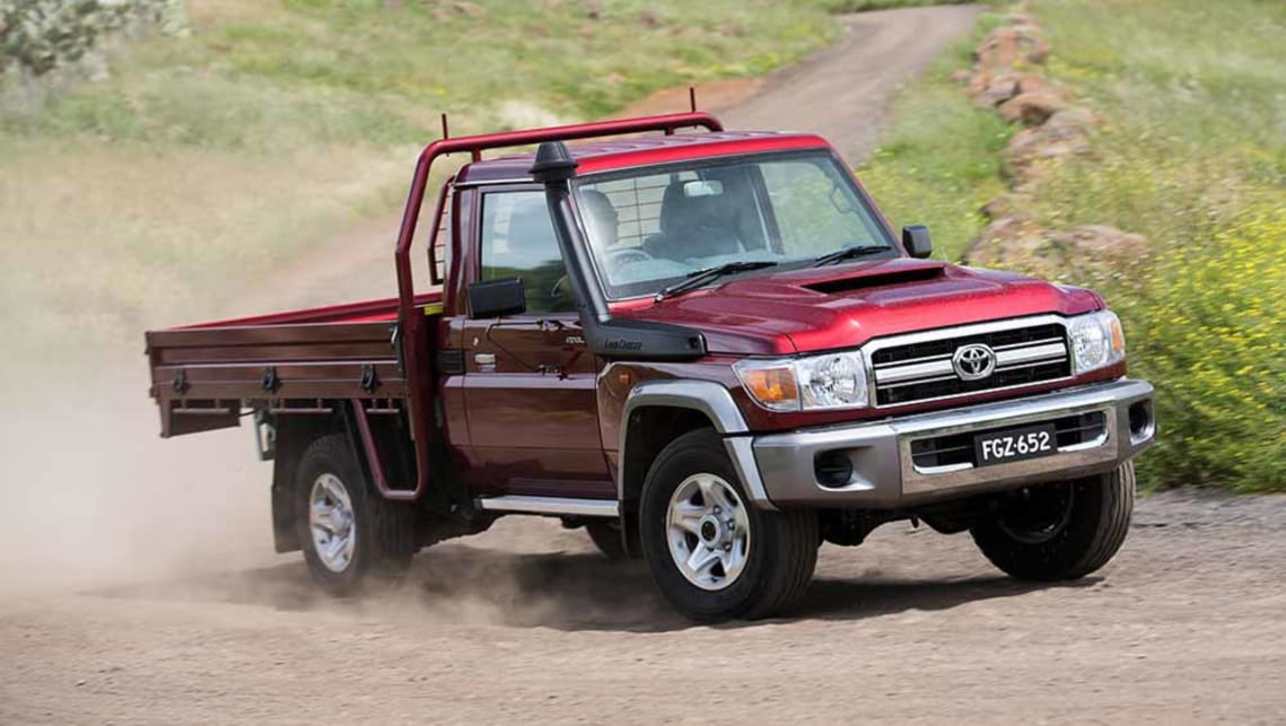Right now, new-car sales are booming, buyers have to wait months and even years for specific model or grade choices in some instances, and nobody is really wheeling and dealing like they used to pre-pandemic.
Coupled with the unprecedented (and global) skyrocketing of used vehicles, stocks of low-mileage new or near-new vehicles are scarce – so much so, that you might be tempted to look at alternatives to your preferred make/model that, for some reason, are still available and at attractive prices to boot.
But should you? Here are 10 of the oldest new cars on sale in Australia today that were launched before January 1, 2013 – complete with a brief explanation as to whether we would or not.
If we’ve forgotten any, please leave a comment below and we’ll add them in.
Let’s go!
Toyota LandCruiser 70 Series – since 1985
.jpg)
Toyota’s trusty old replacement for the legendary FJ40 range debuted globally all the way back when Ghostbusters was new in 1984, and has continued its task as a tool of trade as well as off-road master. Many updates have ensued, while the comprehensively overhauled 76 Series wagon body sold today 'only' came into being in 2007. But you already would know that, looking at just how retro-chic it looks in 2021. Truly the Swiss Army Knife of SUVs.
Mitsubishi Pajero – since 2000
.jpg)
Though extensively revised and updated in 2006, the current Pajero dates back to its 1999 global unveiling and has remained essentially the same since. Developed at a time when Mitsubishi was still an engineering-led ground-breaker, the NM series debuted a monocoque-bodied 4x4 that brought benefits in lightness, strength and refinement, yet was still tough enough to cut it against the Toyota and Nissan 4WDs of the time. That’s why it has lasted so long, and remains an exceptionally capable machine. Heartily recommended.
Lotus Elise – since 2000

Borrowing inspiration from the original Mazda MX-5 roadster – itself an ode to the sleek Lotus Elan of the 1960s – the Elise saved the British sports-car firm in 1996, offering comparatively affordable mid-engined exotic handling as well as the pared-back simplicity and lightness company founder Colin Chapman yearned for. The restyled version available today dates from the Y2K era, though it has been extensively modified and improved. There’s nothing like it, so if you love what you see, go for it!
Mahindra Pik-Up – since 2007
.jpg)
The basic, utilitarian and extremely tough and capable Pik-Up first saw the light of day in 2006 in its Indian home market and has since proven itself as a no-nonsense workhorse as well as a whole heap of go-anywhere fun off-road. On the bitumen, however, its price-driven crudeness is very obvious in too many areas for buyers of today’s Ford Ranger and co. to take too seriously. For farmers only.
Fiat Ducato – since 2007

A joint-venture with PSA (Peugeot and Citroen), this line of big vans debuted in 1981 and has evolved over the ensuing 40 years as a comfy and commanding workhorse. The third-gen series surfaced in Italy (where it’s built) in 2006, arriving here soon after. The Ducato has been updated since, and now offers a level of engineering sophistication to match most of the opposition. Not class leading, but certainly a hard worker.
Hyundai iLoad – since 2008
.jpg)
Dating back when Kevin Rudd was our PM, the iLoad brought a solid and sensible offering to the burgeoning mid-size van market and proved to be a superior offering to the handful of now-thankfully gone forward-control vans led by the previous-generation Toyota HiAce. Noisy inside, with a bouncy ride unless fully laden, the boxiest Hyundai won’t be everybody’s cup of tea, but it gets the job done. We’d wait for the all-new, 2022 Staria replacement, though.
Fiat 500 – since 2008

The only Fiat passenger car you can buy today in Australia is a relic of the early 2000s, given its contemporary Fiat Panda underpinnings. Today it’s expensive, lacks much of the driver-assist safety equipment expected from premium European brands, and remains an ergonomically challenged four-seat city car. But the styling is as beautiful as ever. C’mon, Fiat Australia, please update your iconic bambino! It – and Italy – deserve better.
Lexus LX – since 2008

Yes, the LX is heavily based on the Toyota LandCruiser 200 Series that is about to depart, but the Lexus version – with its distinct interior, body panels and upgraded engineering – will live on for a little longer, so in this list it remains. Heavy, expensive and very in-your-face, the LX450 V8 turbo-diesel and LX570 V8 petrols have their unique, salubrious charms nonetheless – not least the ability to whisk you up a mountain in ridiculous comfort and luxury.
Nissan GT-R – since 2009

Let’s celebrate one of the world’s greatest supercars, that simultaneously provides Porsche 911 GT3 levels of speed and thrills while adhering to the principles and heritage of the Prince and Skyline legacies. A phenomenally interactive machine, with seating for four and an otherworldly ability to potter around town if you so desire, there is truly nothing like the GT-R. Thank you, Nissan, for championing this incredible beast.
Nissan 370Z – since 2009
_0.jpg)
You’d better hurry if you want to order a new 370Z, because its replacement is imminent and you just know that prices will jump. Probably. The regular models are grunty and sporty enough, but the Nismo versions for not much more dough really elevate the driving experience, again bringing a special Nissan-flavoured take to the fast-disappearing coupe market. Again, we’re glad the company is persisting with pleasing enthusiasts.




-2.jpg)


.jpg)

.jpg)
.jpg)



.jpg)

.jpg)
.jpg)

.jpg)

_0.jpg)









.jpg)
Comments